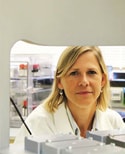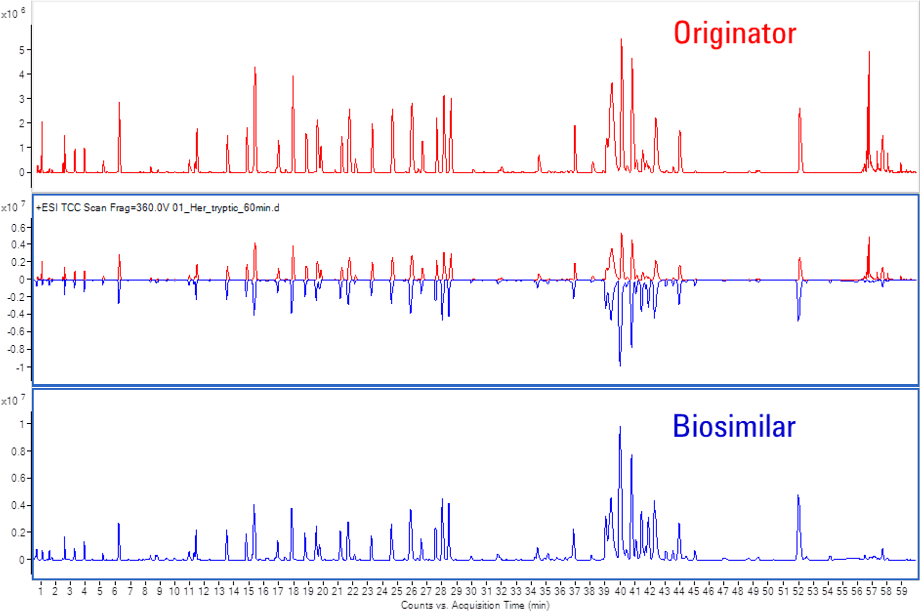Access Agilent eNewsletter August 2015
>> Update My Profile | Subscribe to Access Agilent | Article Directory

Agilent Bravo Platform boosts high-throughput screening for research applications
By Kasia Proctor
Agilent Product Manager, Automation Systems
The time required for sample dilutions and other liquid handling steps can be a bottleneck in many research laboratories. The good news is that with the Agilent Bravo Automated Liquid Handling Platform, you can automate these procedures and achieve fast, accurate, reproducible results. This article highlights customer automation successes with the Agilent Bravo Platform.

Figure 1. Dr. Ming Chen is Director of the High-Throughput Biochemistry Facility in Shanghai, China. He relies on the Agilent Bravo Platform for fast, accurate results.
New targets, new drug candidates
Dr. Ming Chen depends on speed and accuracy the way most of us depend on inhaling and exhaling. That is because Chen directs a biochemistry facility that provides automated high-throughput services to all interested researchers in China. Located in Shanghai, the facility runs experiments for more than 50 research groups.
“We are aiming to establish an open platform for translational research, bridging basic research to preclinical research and development,” he says.
Most of the experiments involve functional genomics and drug screening.
“New drugs for new target, that’s the ideal direction for our efforts,” Chen says.
Dramatically improved screening performance
“With our genome-wide siRNA libraries and small compound libraries, we help to carry out high-throughput and high-content screening projects with speed and accuracy,” he comments.
Chen and his colleagues depend on the Agilent Bravo Automated Liquid Handling Platform. “Automation in liquid handling is essential,” he says. “Without our Bravo Platform, we barely could do any large-scale screening.”

“The Bravo fits our need very well, and we have used this platform to dramatically improve our screening performance in throughput and functional capability.”
Multifunctional and highly automated
“The real strength of the system,” Chen says, “lies in the fact that it is multifunctional and highly automated.”
“We routinely run experiments with 1,000 to 20,000 samples now,” he adds. “The Bravo fits our need very well, and we have used this platform to dramatically improve our screening performance in throughput and functional capability.”
The key benefits of the system, Chen points out, are its speed and reliability. “It is also easy to use,” he says, “thanks to a user-friendly interface.”
“Agilent has great people and provides reliable service, which are the reasons that I have the confidence to keep expanding our Agilent automation platform,” Chen says.

Figure 2. Dr. Paige Vinson is Director of a High-Throughput Screening Facility, where the Bravo Platform accelerates a wide variety of applications.
Groundbreaking research: University relies on Agilent Bravo Platform for reproducible results
Paige Vinson directs a high-throughput screening facility that serves scientists in multiple disciplines. Cancer, cardiovascular disease, diabetes, obesity, metabolism, kidney function – all these and more are subjects currently under investigation.
“It is very gratifying to work with the many investigators here at the university who are doing exciting, groundbreaking research, whether it is basic pharmacological probe development or a full drug discovery program,” says Dr. Vinson.
She notes, for example, that one of the facility’s primary users studies a receptor that has been linked to obesity – and has discovered modulators that can increase or decrease a person’s metabolism.
Another scientist focuses on an ion channel relevant to malaria, diabetes, and kidney disease.
“In many cases, our university’s researchers have discovered small molecules that regulate targets relevant to human health,” Vinson says. “As a shared resource, we help enable this work with technology that allows both an increase in scale and capability.”
Fast, reliable, and easy to use
One of her facility’s key tools is the Agilent Bravo Automated Liquid Handling Platform.

“One of the real strengths of the Bravo Platform is that it can be used for a variety of applications.”
“We provide an array of services to customers at our institution. These services include small molecule screening, siRNA screening, compound management, assay development, and walk-up instrumentation use,” she says. “The users of our facility face a challenge upon scaling their assay to 96- and 384-well formats. A critical component of successfully executing these types of experiments is reliable liquid handling. This is also true during screening where many plates are run under the same condition and reproducibility is key.”
Bottlenecks are elsewhere
One of the real strengths of the Bravo Platform, Vinson says, is that it can be used for a variety of applications.
“Usually throughput is not an issue for us. The bottlenecks are elsewhere,” Vinson says. “With that said, for our screens we will run about 20 plates per day and the Bravo can easily manage that. For plate replication or reformatting, there is no comparison to manual as the Bravo is much faster.”
In fact, she points out, it was the Agilent Bravo Automated Liquid Handling Platform that made it possible for her facility to reformat 100,000 compounds from tubes into well plates and then replicate the plates six times. All of this was done (quickly and reliably) to create a compound library – an invaluable resource for university scientists who seek the right substance to modulate a target of interest in their research.
Want to accelerate your research?
Read more customer stories to learn how the Agilent Bravo Automated Liquid Handling Platform helps you to automate with confidence. Then watch this video and access ordering information for the Bravo Platform, so you too can get results faster.
>> Update My Profile | Subscribe to Access Agilent | Article Directory


